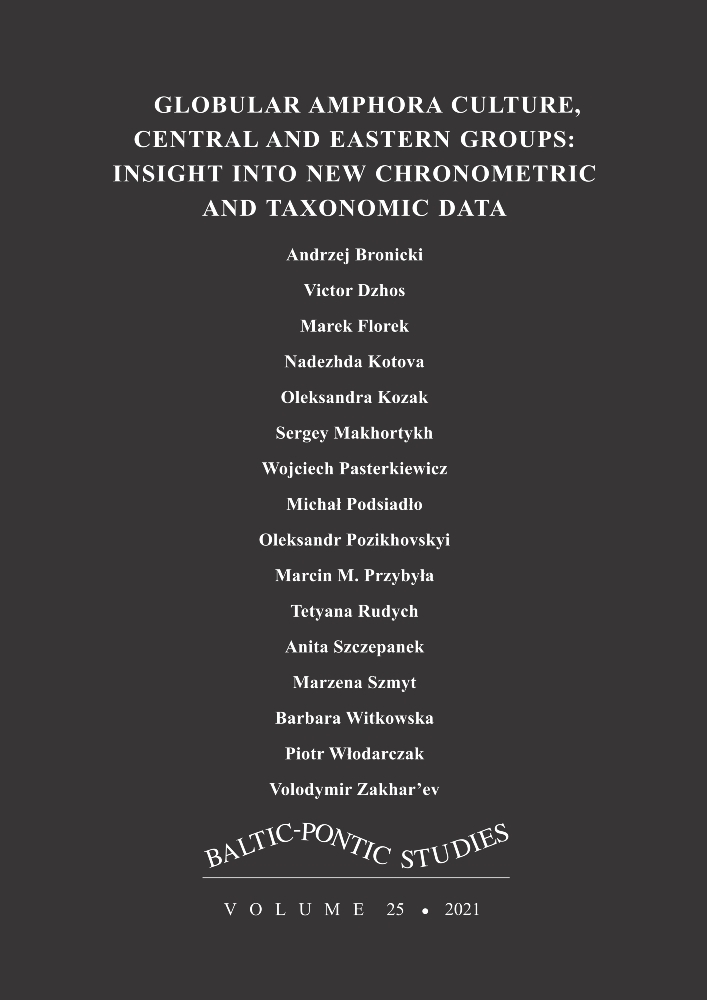Vol. 25 (2021)
EDITORS’ FOREWORD
The twenty-fifth volume of Baltic-Pontic Studies brings together further studies – after volumes nos. 4 and 8 – devoted to the Globular Amphora culture. Sites associated with this unit are found in the vast expanses of Central and Eastern Europe from the Rhine basin in the west to the Dnieper in the east. In turn, its impact is identified even more widely – from the Baltic Sea to the Black Sea and the Sea of Azov. However, throughout the lifetime of human groups related to the discussed unit, its heartland was located in the Central European Lowlands. It was here that communities were formed that pursued their own way of life, one different from other contemporary groups. This can be seen in a unique combination of economic activities, social organization, ceremonial practices and religious beliefs, the traces of which have been preserved in the form of material relics. It was from the Lowlands epicentre that not only human groups migrated in various directions, but also the ideas and material traits of their culture were spread even further afield.
The ten articles that make up this volume therefore explore the issues related to the spreading of Globular Amphora communities and ideas towards the southeast. We thus gathered in one place the latest research findings, representing current data on the chronological and taxonomic characteristics of important settlement agglomerations between the Vistula and Dnieper. These concern two areas, where the so-called central and eastern groups were located. Seven articles refer to the former, more precisely to the Sandomierz-Opatów and East-Lublin subgroups and to the unique grave from Koszyce, Lesser Poland. Three papers discusses selected research questions related to the eastern group. Not only are the time frames of some Globular Amphora agglomerations being redefined, but also their characteristic trait sets and their relationships to other contemporary communities are being reconsidered. The outlined perspective is complemented by a study that documents the distant impact of the Globular Amphora culture into the East European steppe zone.
The preparation and publication of the twenty-fifth volume of Baltic-Pontic Studies were made possible thanks to funds granted by the Faculty of Archaeology, Adam Mickiewicz University in Poznań and the National Science Centre under project no. 2017/27/B/HS3/01444 “Podolia as a Contact Area in the Third Millennium BC: Kurgans on the Rivers Murafa and Riv”.
Marzena Szmyt
